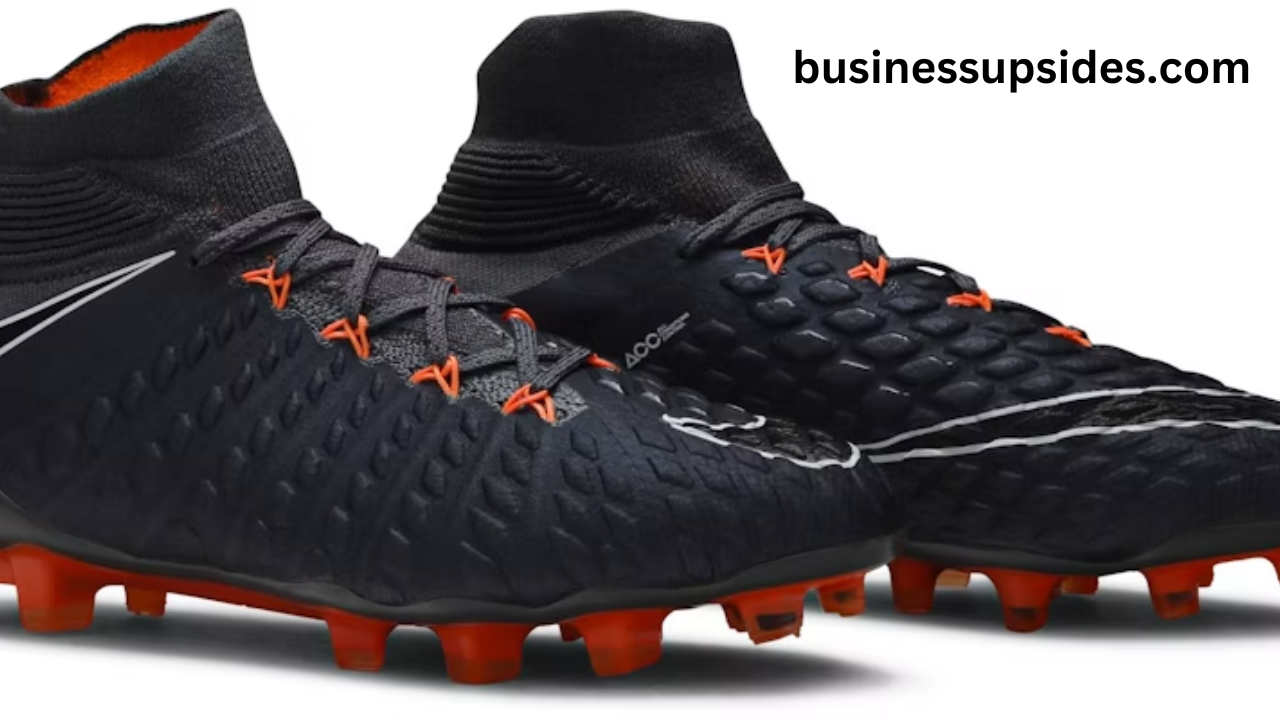Nike Hypervenom A Revolution in Football Footwear
Nike has long been a pioneer in the sportswear industry, especially when it comes to football boots. Among its numerous lines of performance-enhancing footwear, the Nike Hypervenom has established itself as one of the most iconic. Since its debut in 2013, the Hypervenom range has been associated with speed, agility, and precision—qualities that are essential for attacking players who need to be at their best in high-intensity situations. This article delves into the evolution of the Nike Hyper venom, its key features, and why it remains a top choice for some of the world’s best footballers.
The Birth of the Nike Hypervenom
Nike has a long history of creating football boots that push the boundaries of technology and design. However, the Hypervenom line was a major shift in the brand’s approach to footwear. Released in 2013, the Hypervenom was created with one specific type of player in mind: the dynamic, quick-footed attacker. Nike wanted to develop a boot that could enhance the performance of forwards, wingers, and attacking midfielders who rely on sharp, unpredictable movements and blistering pace.
In contrast to other nike hypervenom models like the Mercurial and Tiempo, which focused on speed and control respectively, the Hypervenom was designed for agility. It was tailored to players who thrive on their ability to change direction rapidly, make tight turns, and execute quick strikes on goal. Nike’s goal with the Hypervenom was to give players the tools to dominate in one-on-one situations and to turn the game in their favor with a single move.
The first iteration of the Hypervenom, the Hypervenom Phantom, was unveiled with an aggressive design and cutting-edge technology. It introduced a number of innovative features that would go on to become staples in Nike’s football boots. It was also promoted by some of the biggest names in football, including Neymar Jr., who became one of the primary faces of the line.
Key Design Features
1. Upper Technology
One of the defining characteristics of the Nike Hypervenom is its upper material, which combines innovative textiles to deliver an exceptional feel. The initial version of the Hypervenom featured NikeSkin technology, a synthetic material designed to provide a balance of strength, flexibility, and comfort. This material ensured that the boot would mold to the player’s foot, offering a snug fit and a superior connection to the ball.
As the Hypervenom line evolved, Nike introduced newer materials, such as Flyknit, to further enhance the boot’s lightweight feel and flexibility. Flyknit is a breathable, woven fabric that provides a sock-like fit while maintaining durability. This technology helped eliminate the need for seams in the upper, reducing the chances of discomfort and blisters. Flyknit’s stretchability also ensured that the boot would adapt to the player’s foot shape, providing a second-skin effect.
The textured surface on the Hypervenom’s upper also played a crucial role in improving ball control. With the use of All Conditions Control (ACC) technology, Nike ensured that the boot performed optimally in all weather conditions, whether the pitch was wet or dry. The textured upper allowed players to have better grip on the ball, resulting in more precise touches, dribbles, and passes.
2. Dynamic Fit Collar nike hypervenom
One of the most significant innovations to come with the Hypervenom was the introduction of the Dynamic Fit Collar. This collar, which hugs the ankle and extends up the leg, was designed to provide a seamless connection between the foot and the lower leg. This innovation helped reduce the gap between the boot and the foot, offering better stability and support during quick cuts and sprints.
The Dynamic Fit Collar also enhanced the overall fit of the boot, making it feel more like an extension of the player’s body. This design feature is a hallmark of many of Nike’s modern boots, and it has been widely praised for increasing comfort without compromising performance. For players who rely on quick acceleration and deceleration, this collar design provided much-needed support without restricting movement.
3. Stud Configuration and Traction
The stud configuration of the Hypervenom was carefully designed to maximize traction and agility. Unlike many other football boots that feature a more uniform stud pattern, the Hypervenom’s stud layout was tailored to allow rapid changes in direction and explosive speed. The boots featured Chevron-shaped studs at the forefoot, which provided increased grip during take-offs and when making sharp turns.
In addition, the hexagonal studs at the heel offered more stability, making it easier for players to maintain balance while changing direction at high speed. The configuration was specifically crafted for players who rely on short bursts of speed and quick movements, such as forwards and wingers.
Previous article; Earring Stacks The Art of Layering Earrings for a Unique, Personalized Look
4. Lightweight Construction
Weight is always an important consideration when it comes to nike hypervenom, especially for players whose primary skill set revolves around speed. Nike made sure that the Hypervenom line was lightweight without sacrificing durability. The use of advanced materials, such as Flyknit and NikeSkin, ensured that the boots were light on the foot while still offering support and protection.
The lightweight construction of the Hypervenom allowed players to feel more agile on the pitch. Whether sprinting down the wing or making a quick turn, the boots enabled players to move freely without being weighed down. This made them particularly popular among attacking players who thrive on speed and dexterity.
The Evolution of the Hypervenom Line
Since its initial release, the Nike Hyper venom line has undergone several updates and improvements, each version building on the previous one. The evolution of the Hypervenom can be seen through the introduction of new technologies, colorways, and design tweaks that make the boots even more effective for the modern game.
Nike Hypervenom Phantom II (2015)
Building on the success of the first model, Nike released the Hypervenom Phantom II in 2015. One of the standout features of the Phantom II was its improved Flyknit upper, which provided a more secure fit and added flexibility. The Dynamic Fit Collar was also improved, offering even better ankle support and a more snug fit.
The stud configuration was tweaked for improved traction, with teardrop-shaped studs in the forefoot area to offer better grip during quick direction changes. Nike also introduced the NikeGrip technology inside the boot to prevent foot slippage, ensuring that players’ feet remained securely in place during high-speed maneuvers.
Nike Hyper venom Phantom III (2017)
The Hypervenom Phantom III was launched in 2017, featuring some of the most advanced technologies that Nike had developed up to that point. The boot featured an updated version of the Flyknit upper, now with a Flyknit collar for a more integrated and flexible fit. This model also came with NikeGrip technology, preventing foot movement within the shoe for better lockdown and comfort.
The soleplate and stud configuration were again modified for improved acceleration and traction. The boots featured two-layer traction plates designed to enhance grip on firm-ground surfaces while also allowing for easier lateral movement, making it perfect for attacking players who require explosive speed and agility.
Nike Phantom VNM (2019)
Though the nike hypervenom line was discontinued after the third generation, Nike transitioned to the Phantom VNM boots in 2019, which incorporated many of the same performance-enhancing features. The Phantom VNM boots were aimed at players who specialized in finishing and precise strikes, offering excellent control and responsiveness. While no longer branded as Hypervenom, the Phantom VNM continued to offer many of the signature features that Hypervenom wearers loved, including lightweight materials, superior traction, and flexible uppers.
The Legacy and Impact on Football
The Nike Hyper venom range has had a lasting impact on the football boot market. With its unique design and innovative technology, it was a game-changer for players who focused on agility, speed, and creativity. Not only did it redefine how attacking players approached the game, but it also set new standards for the footwear industry as a whole.
Top footballers have often been seen wearing the Hypervenom, making it synonymous with elite performance. Players like Neymar, Robert Lewandowski, and Wayne Rooney have been seen wearing the Hypervenom on the pitch, helping to elevate its status and credibility. As a result, it has become one of the most popular and respected boot lines for forwards and wingers around the world.
The Hypervenom’s combination of lightweight construction, precise fit, and cutting-edge technology made it a go-to choice for players looking to make an impact on the field. Whether they were executing a sharp turn, launching a long pass, or blasting the ball into the back of the net, the Hypervenom allowed them to do it with confidence.
Conclusion
The Nike Hypervenom is more than just a football boot—it’s a revolution in football footwear. From its introduction in 2013 to the later iterations, the Hypervenom has consistently pushed the boundaries of innovation and design. Its combination of lightweight construction, superior traction, and cutting-edge technologies made it the ideal choice for attacking players who demand the best.
As football continues to evolve, so too will the technology behind the boots that power it. The legacy of the Nike Hyper venom, with its emphasis on agility, speed, and precision, will undoubtedly influence future designs and inspire generations of players to come.











Post Comment